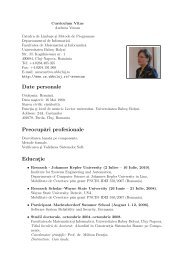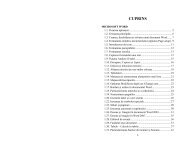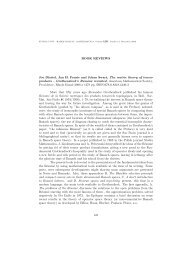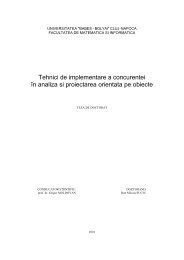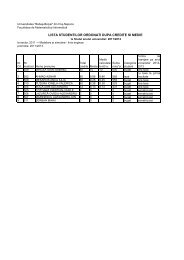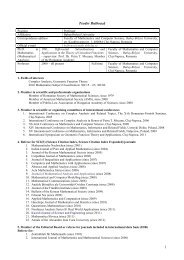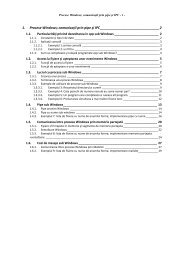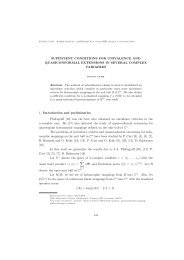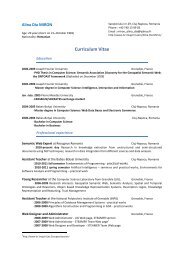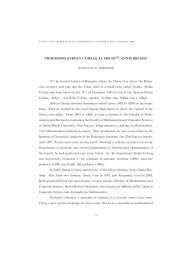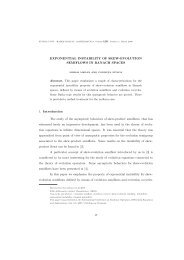CONTENTS
CONTENTS
CONTENTS
You also want an ePaper? Increase the reach of your titles
YUMPU automatically turns print PDFs into web optimized ePapers that Google loves.
228 VIRGINIA NICULESCU (1)<br />
2.2. PowerArray Distributions. Distributions could be also introduced for PowerArray<br />
data structures. The operators tie or zip may be used, on each dimension.<br />
Depending on the possible combinations in the bidimensional case, we arrive to 4<br />
types of data-distributions: linear-linear, linear-cyclic, cyclic-linear, cyclic-cyclic.<br />
2.2.1. Function Transformation.<br />
Theorem 1. For a P owerArrayX.n0.n1 function f, and a corresponding distribution<br />
distr.p0.p1, the function f p , defined by:<br />
(1)<br />
has the following property:<br />
f p .(u ⋄i v) = Φi (f.x0, f.x1, . . . , f.xm, u, v) , i = 0, 1<br />
f p .[l] = [f s .l]<br />
f s .u = f.u<br />
(2) f = flat ◦ f p . ◦ distr.p0.p1<br />
where, the function flat has to be defined based on the same operators as the function<br />
f.<br />
The proof contains a demonstration for each dimension, which is similar to the<br />
proof of Theorem of PowerList functions transformations, given in [5].<br />
2.3. Set-Distributions. By using set-distribution, a data element is distributed to<br />
more than one process [4].<br />
• One possibility to introduce set-distributions on these special types of data structures<br />
is to increase the dimension of the data structure by replication, and<br />
then apply a distribution on the obtained list.<br />
• Another possibility to introduce set-distribution is to apply first a distribution,<br />
and then use a replication for the distributed data structure.<br />
For P owerLists, a simple 2 p times replication on the second dimension, (p ≥ 0),<br />
is defined by:<br />
(3)<br />
rep1.p.X = rep1.(p − 1).X |1 rep1.(p − 1).X<br />
rep1.0.X = X<br />
Replication could be also combined with different permutation functions. For<br />
example, replication with right rotation.<br />
2.4. Distribution Costs. Data-distribution implies some specific costs which depends<br />
on the maximum number of distinct elements (θd) which are assigned to a<br />
processing element. We denote this cost by Td, and its complexity order depends on<br />
θd.<br />
In PowerList case, this cost is equal to the length of the sublists created after the<br />
execution of the distribution function distr.p. If the input list has 2 n elements and<br />
we apply the distribution function with the first argument equal to p, p ≤ n, then the<br />
distribution cost has the complexity order equal to O(2 n−p ).<br />
In the set-distribution case, where data replication is used, this kind of costs<br />
depends on more parameters. If we use a simple replication on a new dimension, and<br />
then apply a Cartesian distribution, Td is not influenced by the distribution on the



